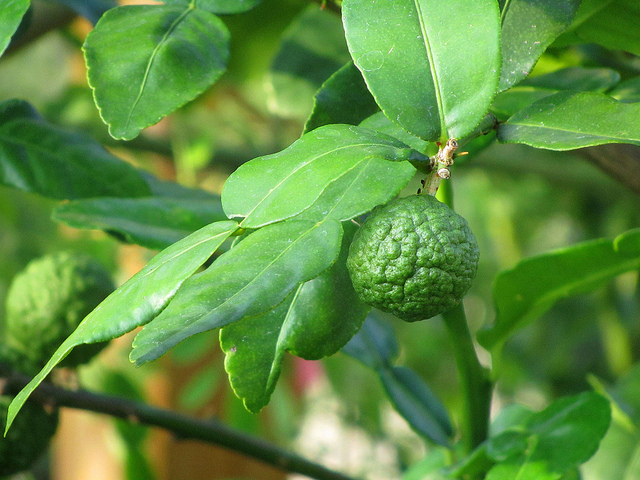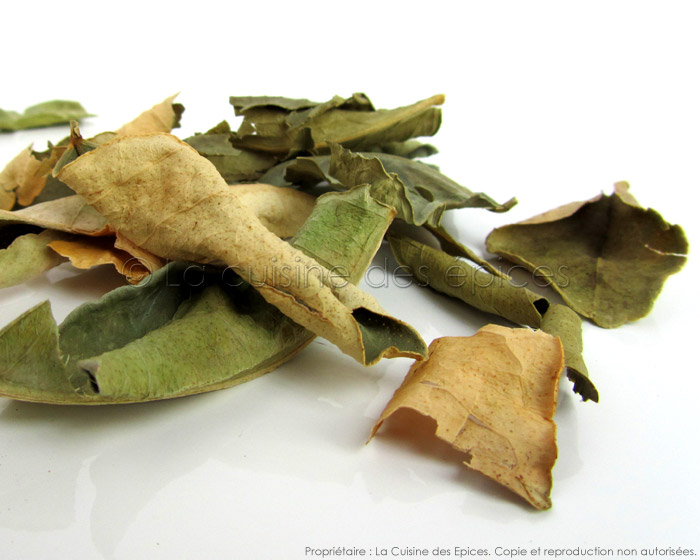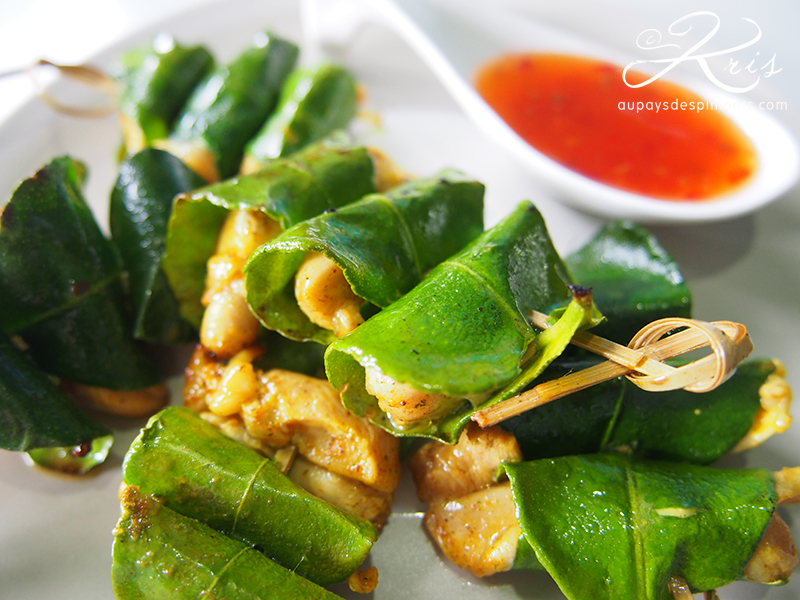Simmer them. You can use whole dried leaves in the same way as when they are fresh. Fold them in half, pinch their midrib, tear it off, put the leaves in your dish while cooking and remove the pieces before eating.
Whether the leaves are dried or fresh, you need the same amount. For example, if your recipe contains a leaf of fresh kaffir lime, you can replace it with a dried leaf. When you choose them, make sure they are still green. If they are grayish, they are too old. If they are only slightly discolored, you can use them. Don’t eat them. Remove them from the dish before serving or while you eat it. Dried kaffir lime leaves are leathery and difficult to chew. If you leave them in the preparation, push them to one side of your plate or bowl when you come across them while eating.
You can also remove them from the dish using a slotted spoon before serving.
Use powder. Add a pinch to a dish to give it a subtle flavor. You may find powdered kaffir lime leaves in some supermarkets with a good Asian aisle. In this case, you can take a small pinch of it and add it to a dish during cooking. The particles will soften as they cook and you won’t need to remove them at the end.
For example, you can sprinkle a little powder on an Asian pan to give it a tangy note.


















